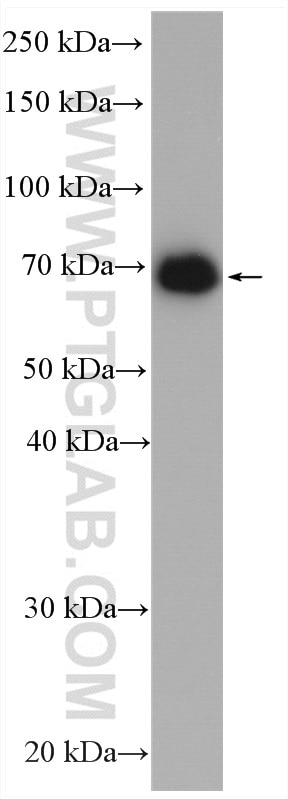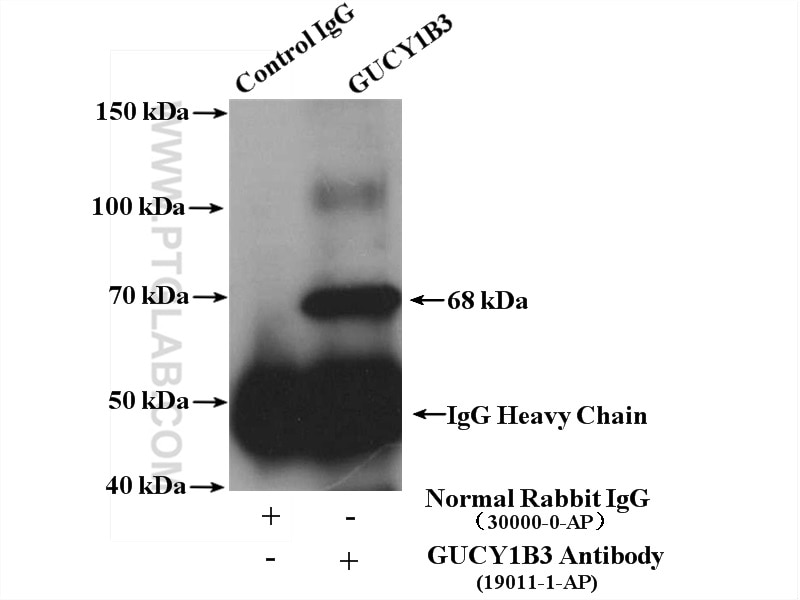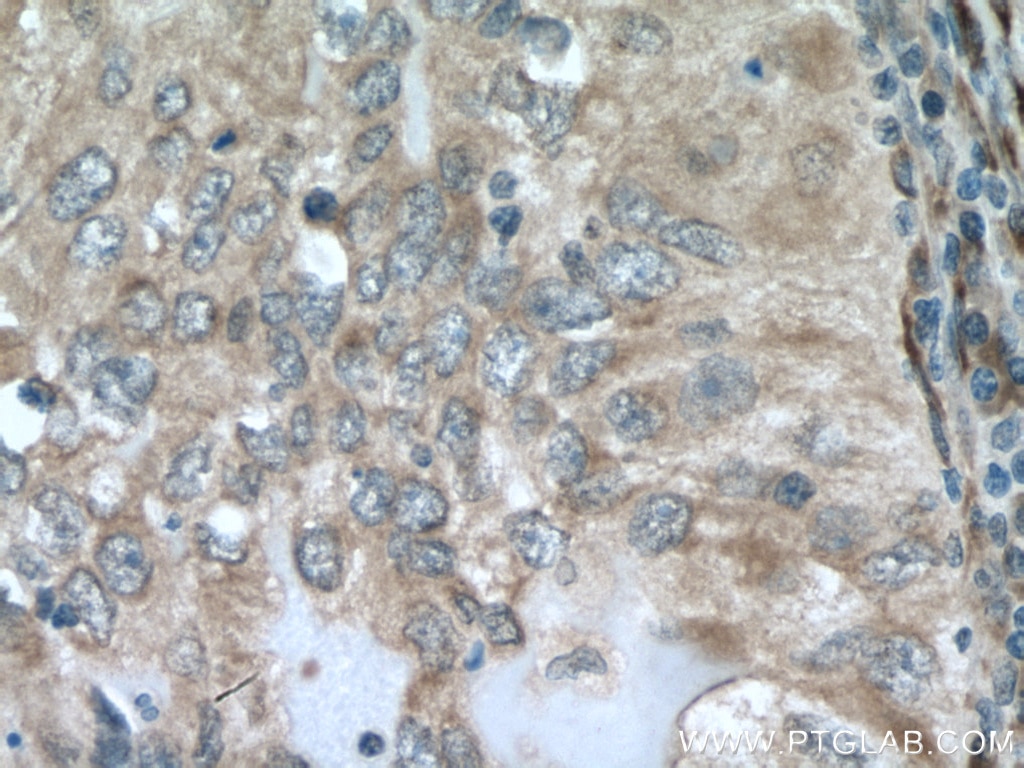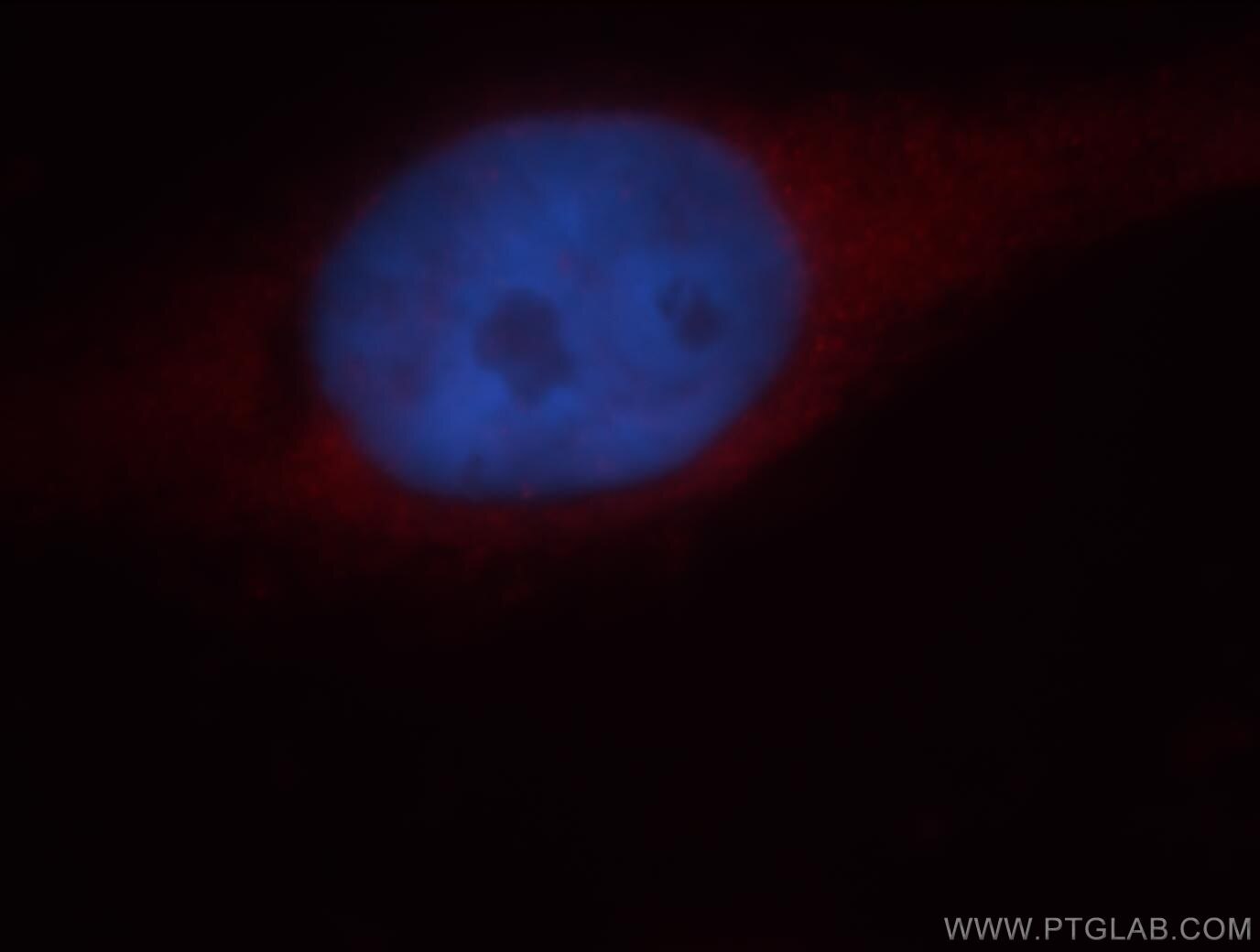- Phare
- Validé par KD/KO
Anticorps Polyclonal de lapin anti-GUCY1B3
GUCY1B3 Polyclonal Antibody for WB, IP, IF, IHC, ELISA
Hôte / Isotype
Lapin / IgG
Réactivité testée
Humain, rat, souris
Applications
WB, IHC, IF/ICC, IP, ELISA
Conjugaison
Non conjugué
N° de cat : 19011-1-AP
Synonymes
Galerie de données de validation
Applications testées
| Résultats positifs en WB | tissu placentaire humain, tissu pulmonaire de rat, tissu pulmonaire de souris |
| Résultats positifs en IP | tissu placentaire humain, |
| Résultats positifs en IHC | tissu cérébral de souris, tissu de cancer du poumon humain il est suggéré de démasquer l'antigène avec un tampon de TE buffer pH 9.0; (*) À défaut, 'le démasquage de l'antigène peut être 'effectué avec un tampon citrate pH 6,0. |
| Résultats positifs en IF/ICC | cellules HeLa, cellules MCF-7 |
Dilution recommandée
| Application | Dilution |
|---|---|
| Western Blot (WB) | WB : 1:1000-1:4000 |
| Immunoprécipitation (IP) | IP : 0.5-4.0 ug for 1.0-3.0 mg of total protein lysate |
| Immunohistochimie (IHC) | IHC : 1:50-1:500 |
| Immunofluorescence (IF)/ICC | IF/ICC : 1:10-1:100 |
| It is recommended that this reagent should be titrated in each testing system to obtain optimal results. | |
| Sample-dependent, check data in validation data gallery | |
Applications publiées
| KD/KO | See 1 publications below |
| WB | See 6 publications below |
| IHC | See 2 publications below |
Informations sur le produit
19011-1-AP cible GUCY1B3 dans les applications de WB, IHC, IF/ICC, IP, ELISA et montre une réactivité avec des échantillons Humain, rat, souris
| Réactivité | Humain, rat, souris |
| Réactivité citée | rat, Humain, souris |
| Hôte / Isotype | Lapin / IgG |
| Clonalité | Polyclonal |
| Type | Anticorps |
| Immunogène | GUCY1B3 Protéine recombinante Ag5196 |
| Nom complet | guanylate cyclase 1, soluble, beta 3 |
| Masse moléculaire calculée | 71 kDa |
| Poids moléculaire observé | 67-71 kDa |
| Numéro d’acquisition GenBank | BC047620 |
| Symbole du gène | GUCY1B3 |
| Identification du gène (NCBI) | 2983 |
| Conjugaison | Non conjugué |
| Forme | Liquide |
| Méthode de purification | Purification par affinité contre l'antigène |
| Tampon de stockage | PBS avec azoture de sodium à 0,02 % et glycérol à 50 % pH 7,3 |
| Conditions de stockage | Stocker à -20°C. Stable pendant un an après l'expédition. L'aliquotage n'est pas nécessaire pour le stockage à -20oC Les 20ul contiennent 0,1% de BSA. |
Protocole
| Product Specific Protocols | |
|---|---|
| WB protocol for GUCY1B3 antibody 19011-1-AP | Download protocol |
| IHC protocol for GUCY1B3 antibody 19011-1-AP | Download protocol |
| IF protocol for GUCY1B3 antibody 19011-1-AP | Download protocol |
| IP protocol for GUCY1B3 antibody 19011-1-AP | Download protocol |
| Standard Protocols | |
|---|---|
| Click here to view our Standard Protocols |
Publications
| Species | Application | Title |
|---|---|---|
Nat Commun Aortic disease in Marfan syndrome is caused by overactivation of sGC-PRKG signaling by NO. | ||
Clin Sci (Lond) Empagliflozin prevents cardiomyopathy via sGC-cGMP-PKG pathway in type 2 diabetes mice.
| ||
Sci Rep Hypertension reduces soluble guanylyl cyclase expression in the mouse aorta via the Notch signaling pathway. | ||
Cell Tissue Res Cavin-3 (PRKCDBP) deficiency reduces the density of caveolae in smooth muscle. | ||
World Neurosurg Upregulation of Connexin 40 Mediated by Nitric Oxide Attenuates Cerebral Vasospasm After Subarachnoid Hemorrhage via the Nitric Oxide-Cyclic Guanosine Monophosphate-Protein Kinase G Pathway. | ||
Front Endocrinol (Lausanne) Specific dilation pattern in placental circulation and the NO/sGC role in preeclampsia placental vessels |











